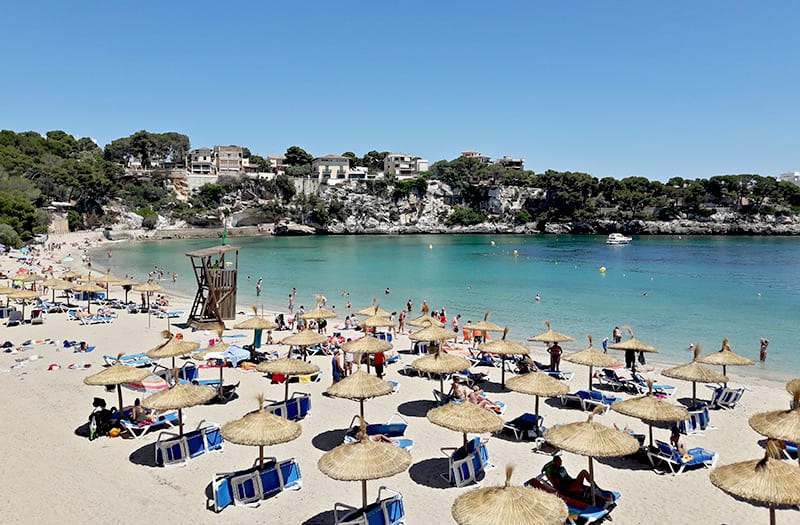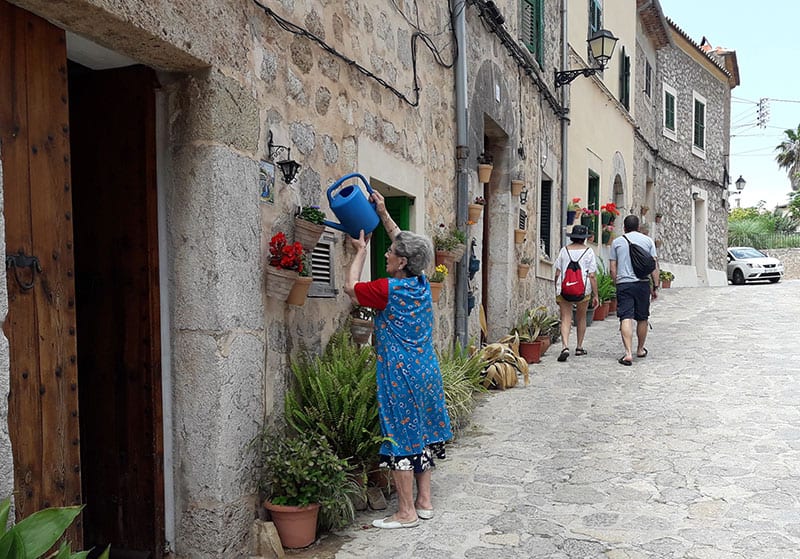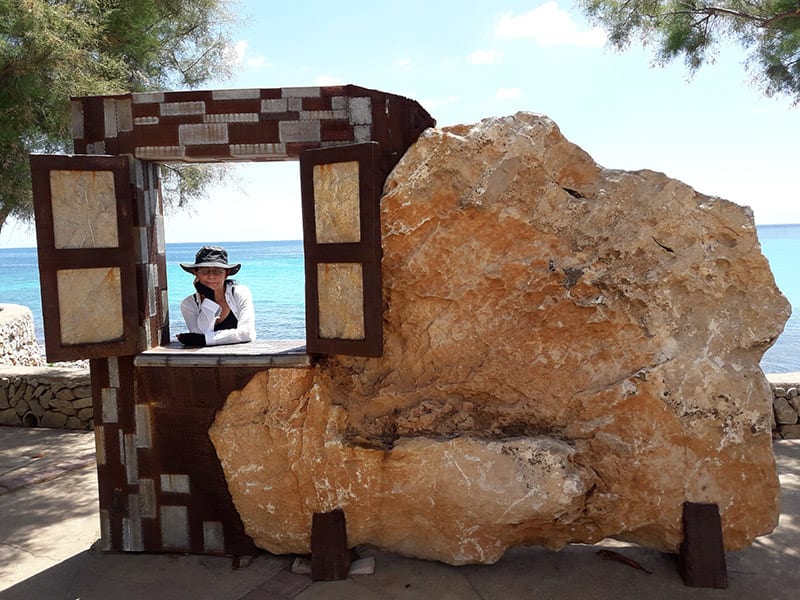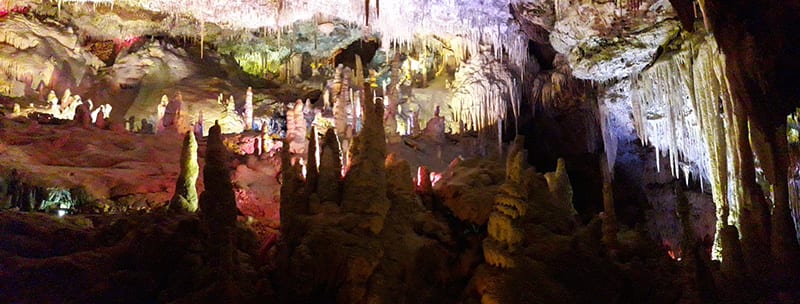What Cuba Could Learn from Mallorca on Tourism

HAVANA TIMES — I spent some weeks in Mallorca, an island which is much smaller than the Cuban province of Artemisa and with a population inferior to that of Holguin, which receives 13 million foreign tourists per year. You can always see 2 or 3 planes flying overhead in the sky and, in spite of such traffic, I managed to go through Immigration and collect my baggage in 30 minutes.
It’s a paradise with beaches that have clear waters and hidden bays between cliffs. Its natural beauty matches that of Cuba, but they are light years ahead in tourism management, everything has been done to facilitate the visitor’s stay.
There are many night clubs, bars and restaurants; excellent highways, beaches with lighting so people can stay longer at night, rental cars, public transport and internet coverage which reaches even the most remote places.
I paid 15 euros for a mobile phone line with internet and I still had credit a month later. I found the most interesting places using my phone, I used it as a GPS to travel, I bought tickets, I found the closest pharmacy nearby and I booked a table at a restaurant.
I understood perfectly well the desperation tourists have when they arrive in Cuba and see they have to pay 1.50 USD to use the internet for an hour. And as if that isn’t enough, they have to go to a hotel or a WIFI hotspot and often sit on the ground in order to surf the web.

Not too long ago, I read in the Cuban press that there are only 3 hotels in Havana which have free internet services for their clients. In Mallorca, restaurants, cafes, bars, the airport and many squares and parks have a free WIFI connection.
Mallorca’s nature is stunning but they also know how to make the most of this gift from the Gods. I visited the Drach caves, where its stalactites and stalagmites could be compared to those found in some Cuban caves if it weren’t for human’s touch here.
In the Drach Caves, the play of lights and colors and an audiovisual presentation convert these tunnels into a damp and eerie world, which tells you about its history, between music and songs. Everything that is said is said in Spanish, English, German and French.
Entry to the caves costs about 20 euros and when you come out of them, there is a souvenir shop and fast food restaurants, which means tourists normally end up spending about 35 euros. There are at least 5 trips a day of 30 people each, every day of the week.
In spite of the massive tourist invasion, local culture remains strong. Old towns were restored, you can travel on an old wooden train through the mountains, there are bands that play in some parks at night and locals of all ages dance.
It’s easy to come across a jazz band or a lady singing opera on the street, while the Cala Millor pier has huge stone and iron sculptures which transform a simple beach into a real art gallery.

There are restaurants serving cuisine from all over the world, but you can always try local dishes. The ensaimada (coiled puff pastry) is a sweet bread from Mallorca from the 17th century, you can find it everywhere and, if anyone has forgotten to buy them, they are also sold at the airport.
I remember years ago, that raspadura (an unrefined sugar product also known as panela) used to be sold in Havana’s airport and they sold out immediately, they never brought back any more. It might seem like nonsense but how many Cuban families could make a decent living by selling this sweet.
In Mallorca, people don’t have the natural joy of a Cuban person or the wit of an Andalusian. The mallorquin is more serious, of fewer words but still friendly with visitors, always ready to give directions and to serve tourists quickly and efficiently everywhere.
They created a network of health clinics that facilitates medical tourism of chronic patients, such as those who need dialysis. For locals, healthcare is free but tourists have to pay, some directly and the majority via social security agreements between their countries.
They might have problems in Mallorca, but the success of the tourism sector seems to be the result of the joint effort of all sectors: the hotel industry, the hospitality industry, public projects, healthcare, culture, institutional management and private initiatives, customs, ports and airports.
Tourism rakes them in approximately 12 billion euros per year. Nothing is cheap but you leave with the feeling that you haven’t been ripped off and really wanting to come back. This wanting to come back is what ensures they have a stable flow of tourists.

Cuba’s natural treasures rival those in Mallorca, its cultured population as well, likewise its cultural expressions such as music, dance or the visual arts. It even has the capacity already created to promote health tourism.
However, it continues to fail in organizing its resources efficiently. You can cross the Red Sea faster than you can get out of a Cuban airport, cultural clichés are shown, the Internet that exists here belongs in the Stone Age, streets and highways are in a poor state, service is very slow.
Cuba is trending right now but trends come and go and the “national economy locomotive” could be left without fuel if the need to return isn’t instilled in visitors. More so now than after Trump has placed new obstacles in US tourism to the island.






Nothing to be ashamed about Dan, I too would have fought for liberty from dictatorship. Remember that many of those who were active revolutionaries were not communist. Sadly having deposed Batista, the Castros betrayed the non-communists by slyly (I say that with regard to Fidel Castro’s recorded changes of view) introducing communism post-revolution. Those who opposed communism were purged. In one mock trial personally conducted by Fidel Castro, 39 revolutionaries mainly officers, were jailed. But Camilo Cienfuegos was popular and a threat, so his disappearance had to be arranged.
I believe that also, Ken. If I lived there during that era, I would have fought along side Che. Don’t tell my Conservative friends though. Lol…
Great one, Fernando. I’m a capitalist and grew up far from rich. I didn’t get all the Christmas presents some of my friends did but didn’t feel deprived. At the age of 7, i found ways to make money so I could enjoy “kid basics,” comic books, candy and movies. As the years went by, I went to high school but worked 40 hours a week to save up for a new car. In all, to maintain the beauty you witnessed in Mallorca, it takes money and that’s the reason for entry fees and stores that sell items to tourists. In short, if one wants to take a vacation, it might take working more than 40 hours a week to achieve that goal and that’s a fact. In fairness, I was a frequent visitor to Puerto Rico and I found that island to be quite poor, run down and at times threatening. Still, a beautiful place to visit and great people. I hope one day to see Cuba for myself but remain steadfast in never traveling there until I’m free to just buy a ticket without any pre-conditions. Thanks for your great story.
Comparing Mallorca to Cuba is to compare capitalism with communism.
Thanks Fernando!
Most Tourist don’t come to Cuba to find the usual tourist fare – they want to experience something unique. Yes, you are right: Better internet coverage is a MUST.
However, don’t try to copy Mallorca. It is beautiful, but the inhabitants are not happy about the many drinkers who come only for cheep booze and spoil the culture, lives and well-being of the locals.
Cuba needs to be very careful in which direction they want to go. More is not always better!!! Programs to cater to well-educated, eco-minded and cultural interested travellers will bring more recognition, money and well-being for the population.
Cubans have very few benefits from all-inclusive resorts and mass tourism. Better becoming a classy travel destination – not a cheap one! If someone is on the cheap they can go to the Dominican Rep. Individual travellers are better off in Cuba. Those people are also trying to stay in private homes, not in tourist hotels.
A constantly updated list of these Bed&Breakfast all over Cuba would be very helpful.
Happy Cuba Travels
Doris
I don’t think that your point #1 is true. Source please. However, because the Castros all but closed Cuba to tourism by outlawing the US and then slapping a 10% surcharge on its conversion, if you are right, then when you are starting from such a low base, rapid growth is not a mystery.
Hahaha. Yea, what’s that about?
Generally speaking that’s true. However it could be because all the “sad” Cubans have emigrated to Havana.
Faces much happier at the airports farther east. Not sure what that is all about, but the farther you get from Havana, the happier the Cubans I meet seem to be.
Cuba is well Cuban, it has a revolutionary history, and a view expressed by a lot of people who visit of a population who are still being surpressed. The young people of people whilst the older generation are still in awe of the Castro clan. Cuba is a beautiful island which could have so much more to offer the tourist. The government if it is serious about tourism must revisit what it wants for Cuba and it’s people, does it want to keep it’s people surpressed and portray the country as a military dictatorship (As indeed is surely still is?) or are they prepared to give the people a little bit of freedom in making decisions regarding the development of tourism? Tourism brings in huge amounts of money that the country surely need. Cuba needs tourism, and we the tourists need Cuba! Together we will all benefit.
One of the things that I really enjoy about vacationing in Cuba is that the tourist areas are far less “touristy” than many other places are are fully built up for that purpose. It may bring in less revenue, but I think that the way Cuba does things is what keeps bringing the people who love it back year after year.
Very pleased that Fernando enjoyed his holiday. It has provoked some very interesting comments.
It is perhaps worth bearing in mind the following.
1. Cuba has achieved a massive scale growth in tourism over the past 20 years. One of the world’s fastest growing tourist destinations over this period.
2. Whilst dragging behind on certain aspects of the industry, Cuba has specific advantages. For example being the one of the safest holiday destinations in the region.
3. Spain indeed has a very adept tourism industry and so it should have. Franco decided to go for a big tourism boom in the mid 1960s (driven by a currency devaluation coupled with large scale investment in hotels and other facilities). It has therefore been doing tourism for a whole 30 years longer than Post-Revolution Cuba. It shows.
But give Cuba another 30 years of tourism development and see what happens.
Cuba tourism will not compete until there is a legal framework that unleashes industry. In all the east European countries, dramatic advances tool place after the end of Communism.
Absolutely true. That combined with the lack of toilet seats makes one not anxious to be there.
I think it is fair to say that prior to 1959 there was plenty of the freedom and opportunity that Mr. Smith is advocating, but Cuba as a whole did not prosper.
You’ve sold me on Mallorca! Yes, Cuba has a long ways to go to match these resources. I still love Cuba and will return as soon as I can!
I understand the jest of the whole article. The answer is very obvious: free up the economy and give the people the opportunity to grow and make money for themselves and Cuba will prosper. This is no secret, of course. The Communist and Socialist have this workers dream (nightmare), that just doesn’t work for the common man. The leaders of course will get rich. It’s like a pyramid scheme: you get in early and make all the money.